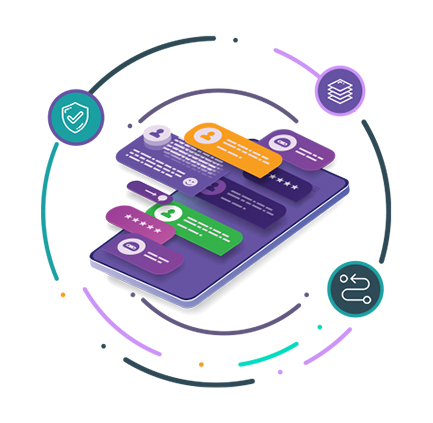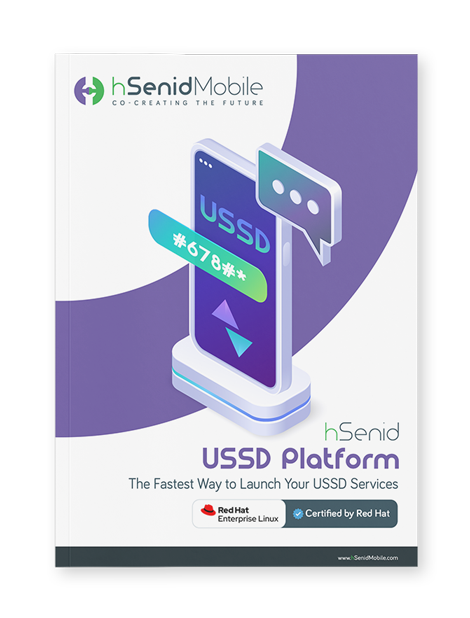We live in a time where everything seems to need an app. Need to pay a bill?
There’s an app. Want to send money? Another app. But what if someone doesn’t
have a smartphone or a data connection? Are they left out?
Not at all. That’s where USSD Gateway Solutions steps in.
You might have seen or used it without even realizing it. Those simple codes that start with a star and end with a hash, like #123#, allow people to check their balances, transfer money, buy mobile credit, and more. This isn’t new. It’s been around for years, quietly serving millions of people without fanfare.
USSD Gateway Solutions, which stands for Unstructured Supplementary Service Data Solutions, might sound like a mouthful, but the idea is simple. It lets users interact with services through short codes entered on any mobile phone. And when we say any phone, we mean it. Whether it’s a basic feature phone or a smartphone, Unstructured Supplementary Service Data works instantly without needing an internet connection.
In countries where mobile data is expensive or smartphones are out of reach for many, Unstructured Supplementary Service Data continues to be a lifeline.
Let’s take Nigeria as another example. In 2020, mobile transactions jumped significantly, and USSD made up a solid part of that growth. Around 35% of total mobile transactions were completed through USSD channels. Even with faster networks becoming available, people continue to trust and use this method.
And it’s not just for money transfers. USSD is used for everything from insurance and healthcare to education and retail services. It keeps working regardless of the phone type or mobile network, whether it’s 2G or the latest 5G.
Let’s look at what these gateways do.
First, they connect with the core mobile network. For instance, the hSenid USSD Gateway includes its own SIGTRAN stack. This helps keep things cost-effective by removing the need for extra hardware. It also works with modern network setups using SIP, which is important as mobile networks evolve.
Second, these gateways allow apps and services to connect easily. Banks or retail platforms can use simple API connections to plug into the mobile network. This cuts down the time it takes to launch a new service and makes the whole setup easier to manage.
Third, they take care of session handling. Imagine you get disconnected halfway through a mobile banking transaction. A good USSD Gateway Solution system can remember where you left off and bring you back to the same spot when you reconnect.
Finally, the gateway supports different ways of charging users. Businesses can choose to charge per session or per request, depending on what suits them best.
As technology progresses, USSD is evolving, not disappearing. With the rollout of 5G and next-generation mobile networks, USSD continues to adapt to meet the needs of underserved populations. By remaining accessible on even the most basic phones, USSD has proven to be a powerful tool for connecting people to essential services in regions where connectivity is limited. It’s not just a convenience — it’s a lifeline for millions.
Designed to work with both existing and future mobile networks, hSenid’s USSD Gateway ensures that businesses can continue to reach their customers, even as technology advances. The platform is user-friendly, flexible, and perfectly suited for delivering secure, accessible services to people, regardless of the type of phone they use. For businesses looking to reach underserved populations and expand their reach, hSenid USSD Gateway provides the ideal solution.
Not at all. That’s where USSD Gateway Solutions steps in.
You might have seen or used it without even realizing it. Those simple codes that start with a star and end with a hash, like #123#, allow people to check their balances, transfer money, buy mobile credit, and more. This isn’t new. It’s been around for years, quietly serving millions of people without fanfare.
USSD Gateway Solutions, which stands for Unstructured Supplementary Service Data Solutions, might sound like a mouthful, but the idea is simple. It lets users interact with services through short codes entered on any mobile phone. And when we say any phone, we mean it. Whether it’s a basic feature phone or a smartphone, Unstructured Supplementary Service Data works instantly without needing an internet connection.
In countries where mobile data is expensive or smartphones are out of reach for many, Unstructured Supplementary Service Data continues to be a lifeline.
Why USSD Gateway Solutions Is Still Thriving
While many parts of the world have embraced mobile apps, the story looks different in developing regions. In Sub-Saharan Africa, for example, almost 90% of mobile money transactions still happen through USSD. That number alone shows how deeply people rely on this service.Let’s take Nigeria as another example. In 2020, mobile transactions jumped significantly, and USSD made up a solid part of that growth. Around 35% of total mobile transactions were completed through USSD channels. Even with faster networks becoming available, people continue to trust and use this method.
And it’s not just for money transfers. USSD is used for everything from insurance and healthcare to education and retail services. It keeps working regardless of the phone type or mobile network, whether it’s 2G or the latest 5G.
The Technology Behind the Simplicity
What keeps all of this running smoothly is something most users never see. It’s called a USSD gateway. This gateway acts like a middleman, making sure the request entered on the phone connects to the right service provider, be it a bank, a telecom operator, or a government agency.Let’s look at what these gateways do.
First, they connect with the core mobile network. For instance, the hSenid USSD Gateway includes its own SIGTRAN stack. This helps keep things cost-effective by removing the need for extra hardware. It also works with modern network setups using SIP, which is important as mobile networks evolve.
Second, these gateways allow apps and services to connect easily. Banks or retail platforms can use simple API connections to plug into the mobile network. This cuts down the time it takes to launch a new service and makes the whole setup easier to manage.
Third, they take care of session handling. Imagine you get disconnected halfway through a mobile banking transaction. A good USSD Gateway Solution system can remember where you left off and bring you back to the same spot when you reconnect.
Finally, the gateway supports different ways of charging users. Businesses can choose to charge per session or per request, depending on what suits them best.
A Simple Solution with Big Impact
In an ever-changing digital world, Unstructured Supplementary Service Data proves that sometimes, simplicity is the most effective tool. While many markets embrace smartphones and mobile apps, Unstructured Supplementary Service Data remains essential in developing countries, offering secure, reliable, and easy-to-use services without needing internet access or advanced devices. It continues to play a crucial role in ensuring that millions of unbanked individuals have access to vital services, whether it’s sending money, paying bills, or even accessing healthcare.As technology progresses, USSD is evolving, not disappearing. With the rollout of 5G and next-generation mobile networks, USSD continues to adapt to meet the needs of underserved populations. By remaining accessible on even the most basic phones, USSD has proven to be a powerful tool for connecting people to essential services in regions where connectivity is limited. It’s not just a convenience — it’s a lifeline for millions.
How hSenid USSD Gateway Solutions Can Revolutionize Your Business
If you’re looking to expand your service offerings and connect with a broader audience, the hSenid USSD Gateway is an excellent solution. It allows businesses to quickly and cost-effectively offer mobile services, from mobile banking to retail services. With easy-to-use features like API integrations and customizable menu creation, the platform makes launching new services faster and simpler, all while ensuring a seamless experience for users.Designed to work with both existing and future mobile networks, hSenid’s USSD Gateway ensures that businesses can continue to reach their customers, even as technology advances. The platform is user-friendly, flexible, and perfectly suited for delivering secure, accessible services to people, regardless of the type of phone they use. For businesses looking to reach underserved populations and expand their reach, hSenid USSD Gateway provides the ideal solution.








